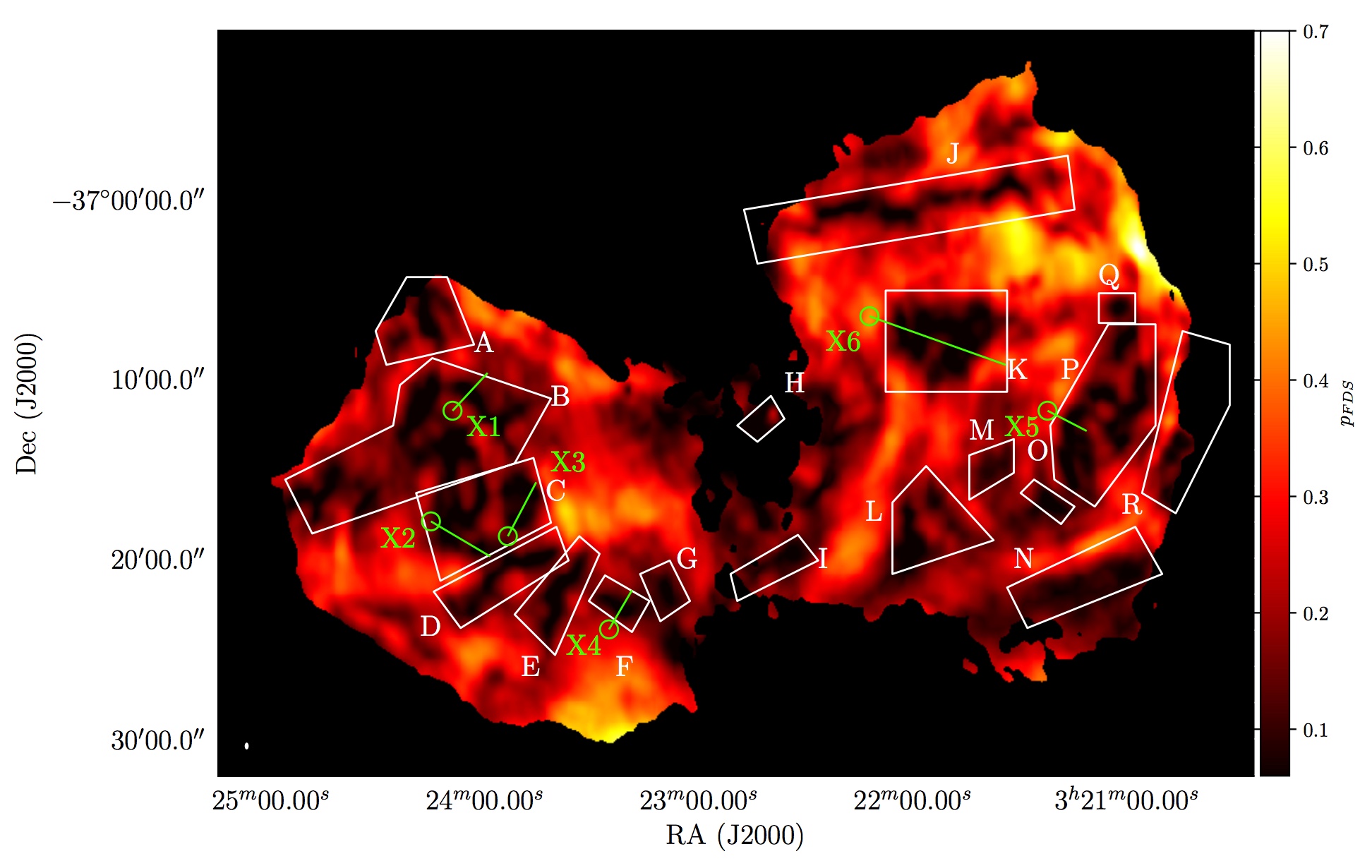| 26th of April 2018 |
|---|

|
| Low polarisation patches in Fornax A |
|
Anderson et al. have presented observations of the polarized radio
emission from the nearby radio galaxy Fornax A, using data from the
Australia Telescope Compact Array (ATCA). Due to its relatively
closeness (18 mega-parsecs, about 60 million light years), a 32-point
mosaic was needed to image the full extent of the radio galaxy. The
team used modern broadband polarimetric techniques to examine the
nature and origin of conspicuous low-polarization patches in the
lobes. Anderson et al. find that these low-polarization patches are
best explained by the presence of 9 massive regions of magnetized
thermal plasma in the lobes, structured in shells or filaments. The
low polarization patches are seen as darker areas within the radio
lobes in the image above. The most heavily depolarized complexes are
indicated with boxes labeled A–R. Region Q is a
depolarization silhouette generated by the foreground spiral galaxy
NGC 1310. The synthesized beam size is indicated in white in the
bottom left corner.
More details are given in the paper published in The Astrophysical Journal, volume 855, article id. 41 (2018).. |